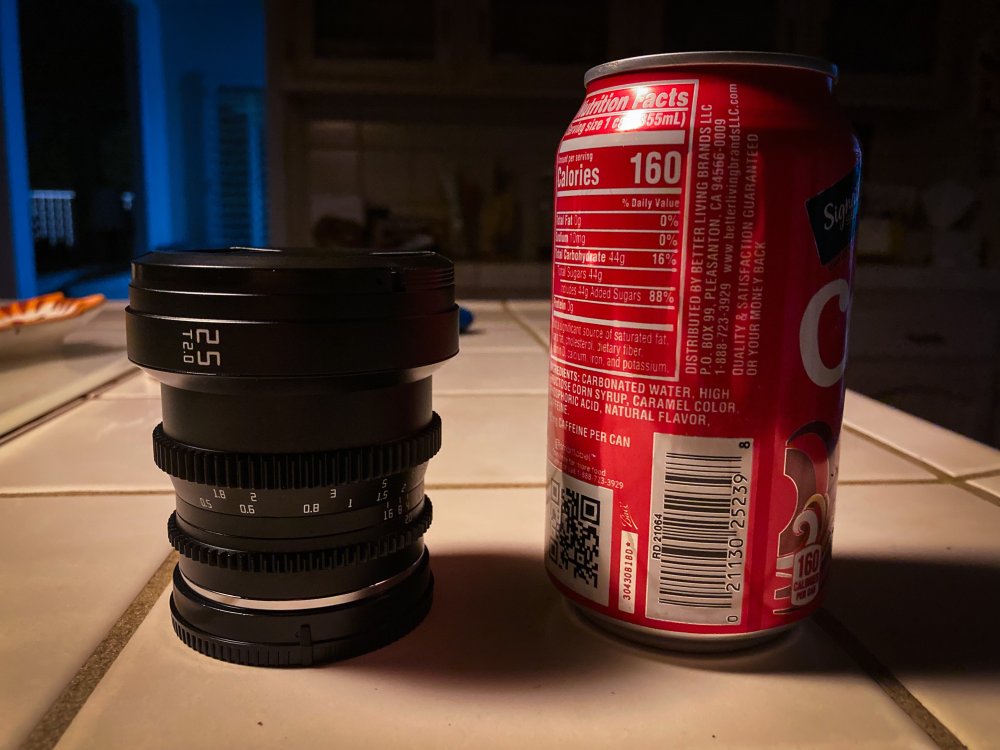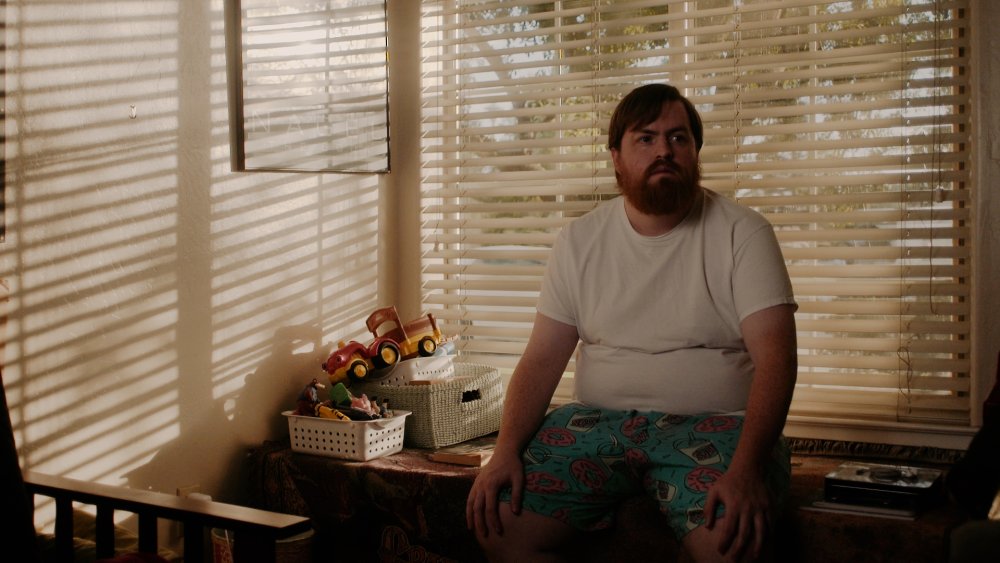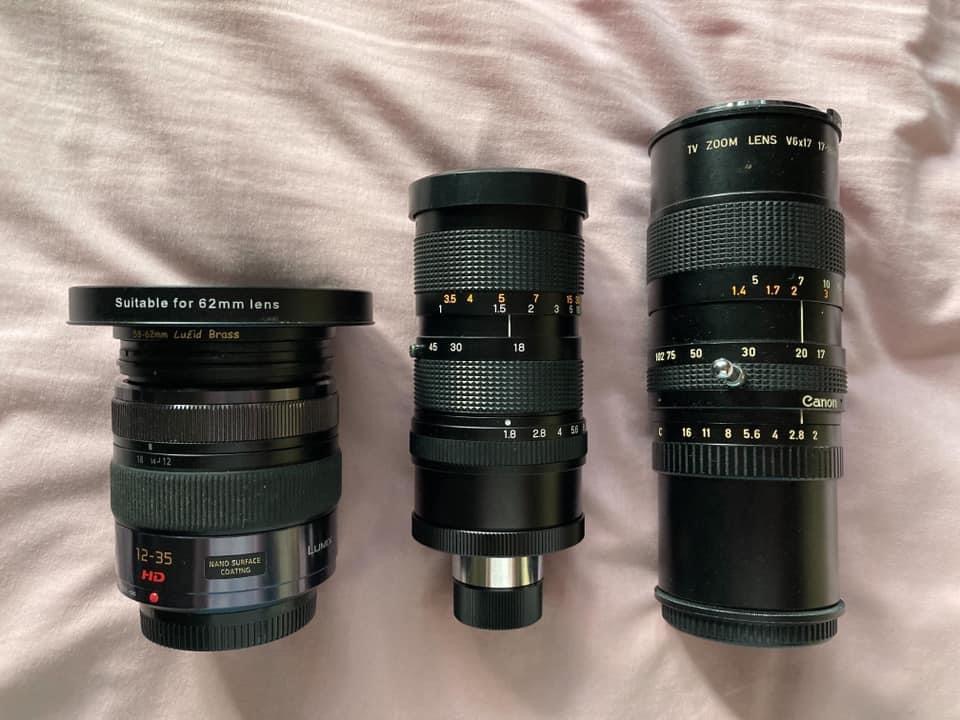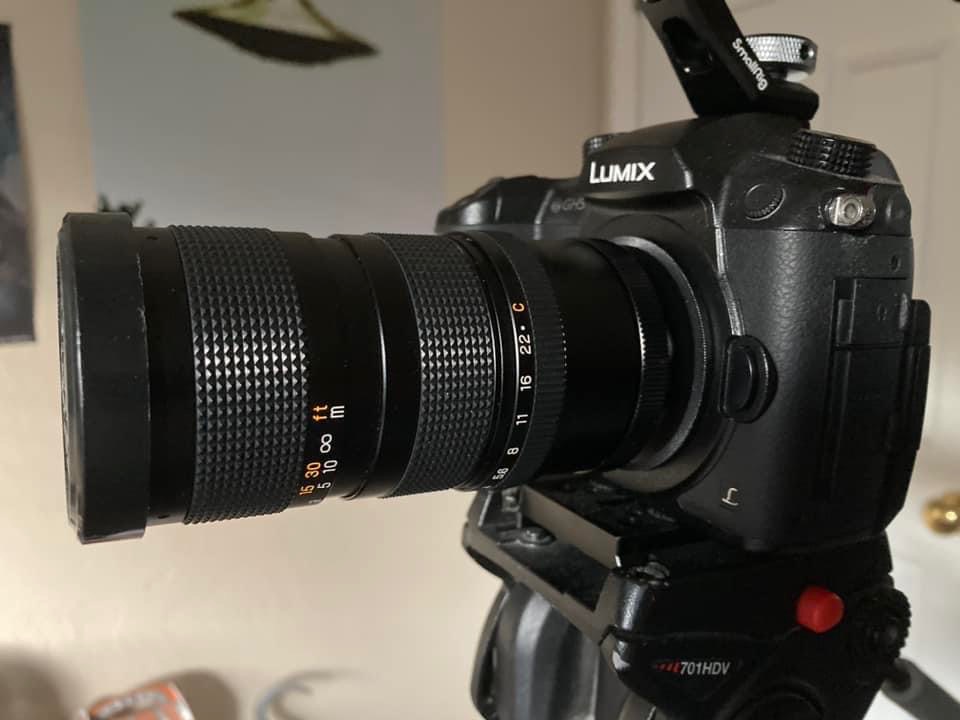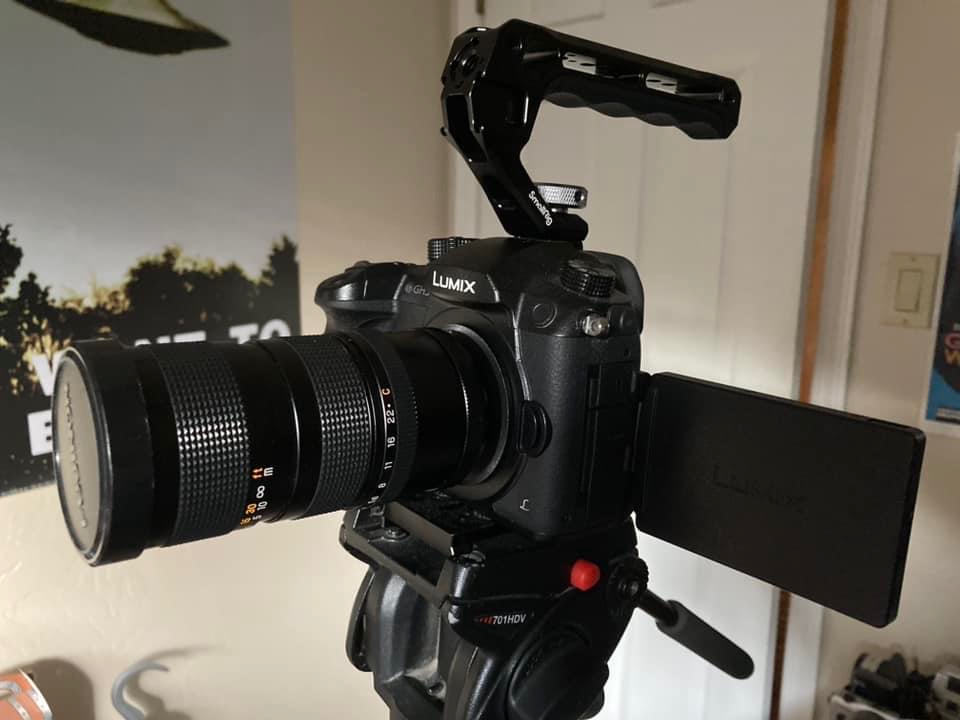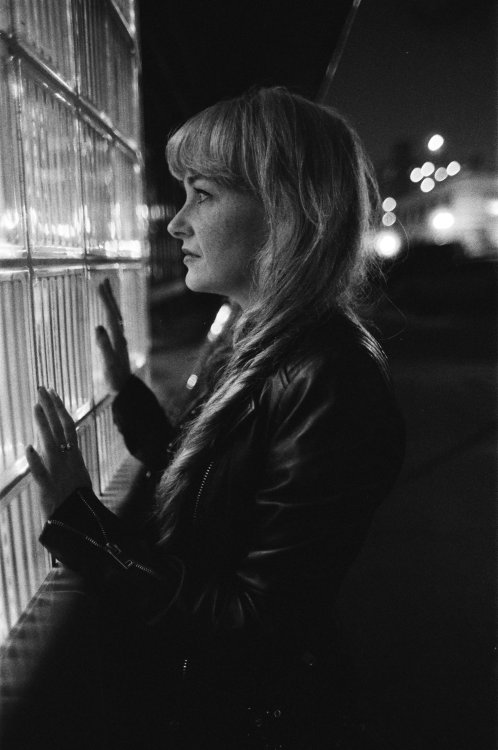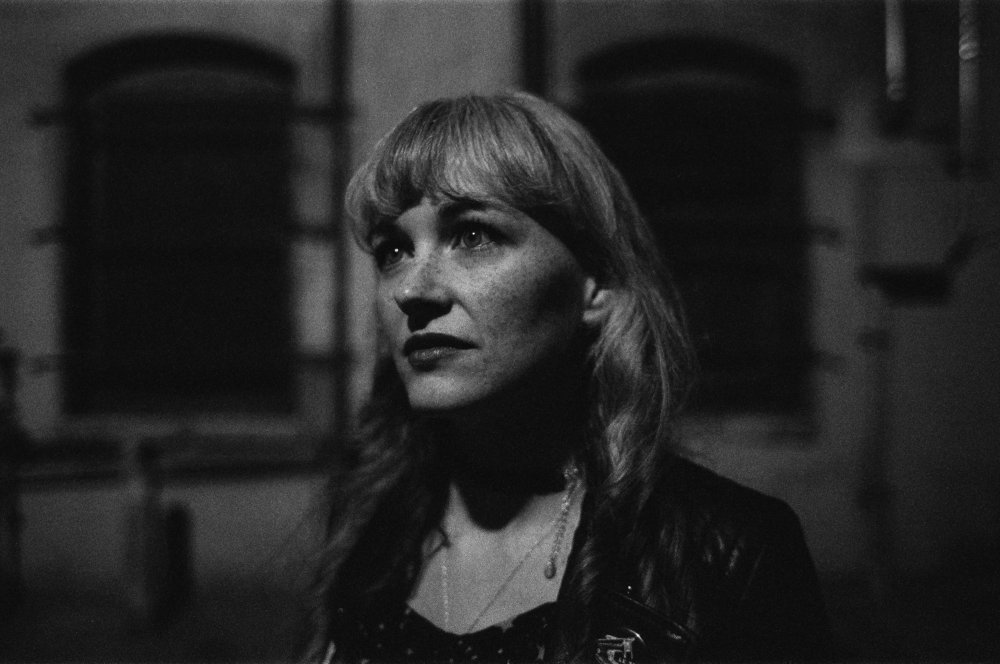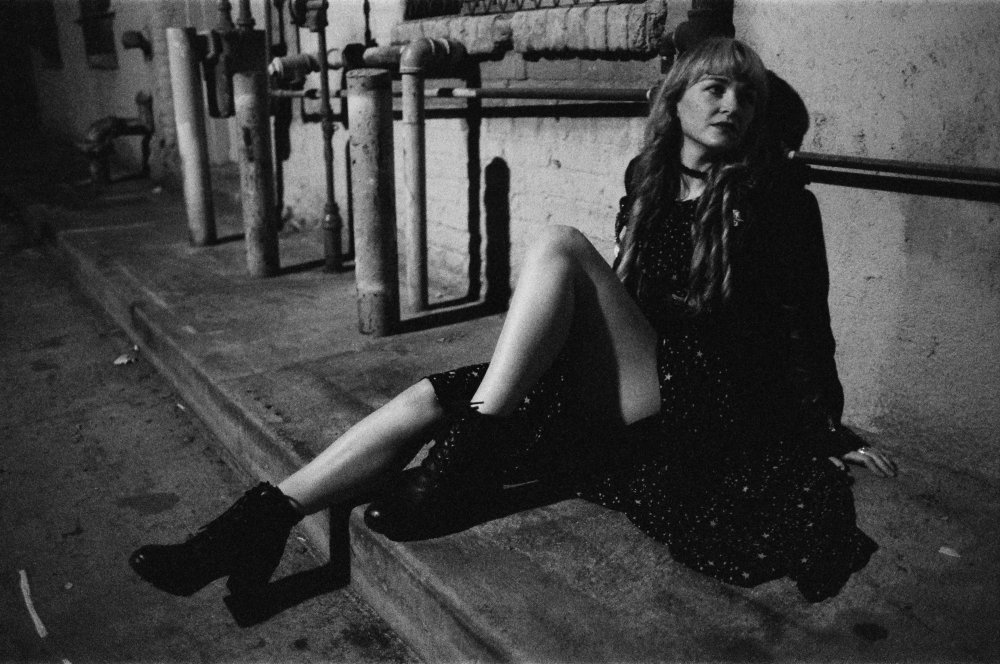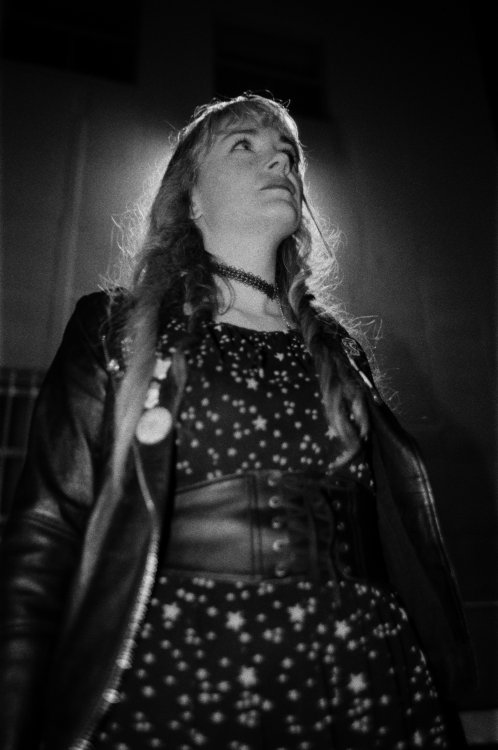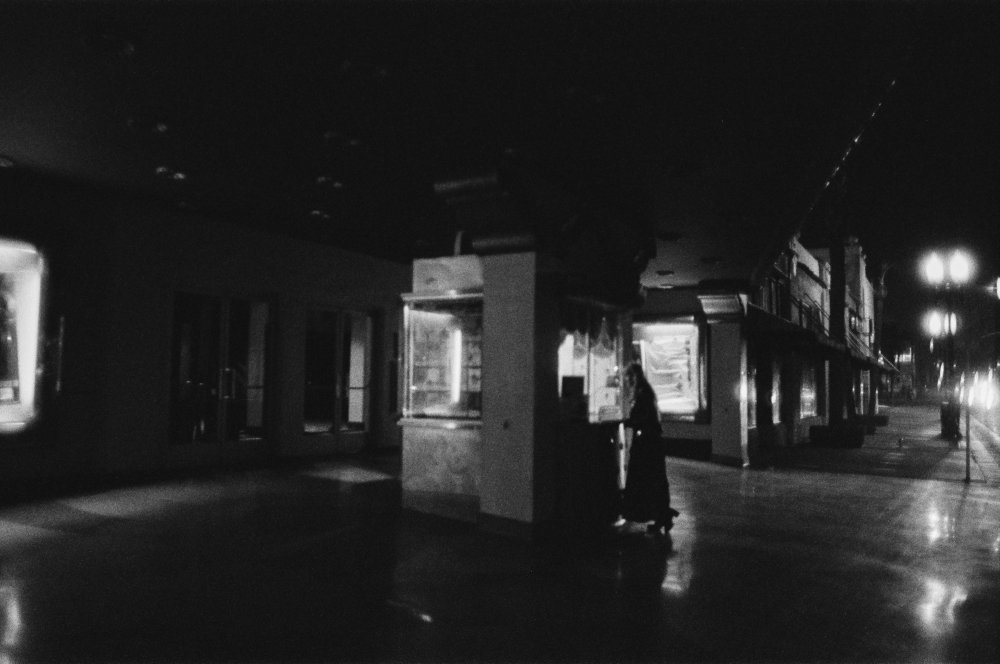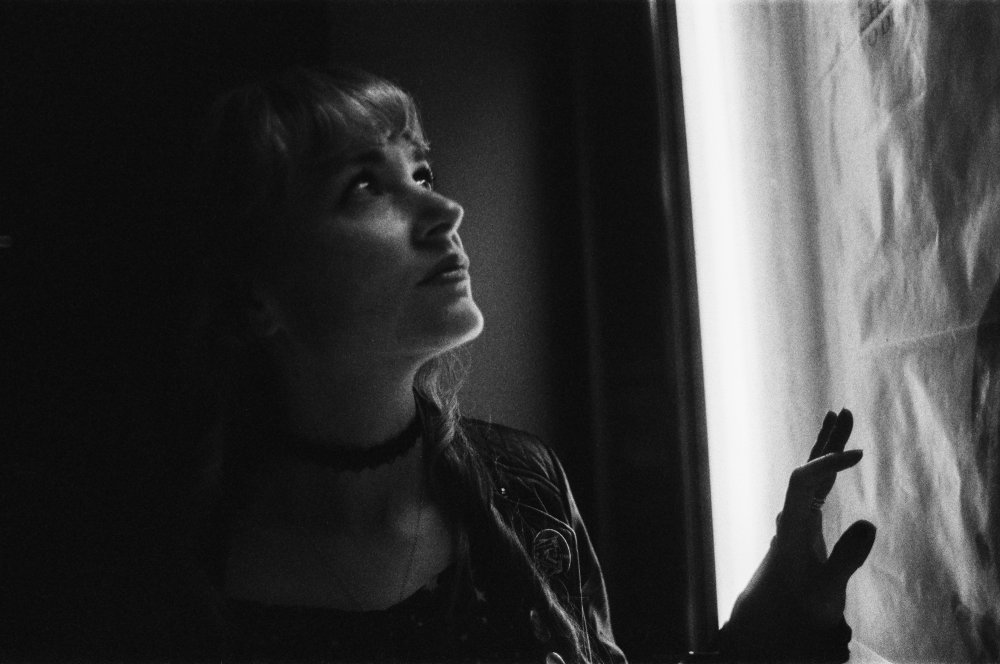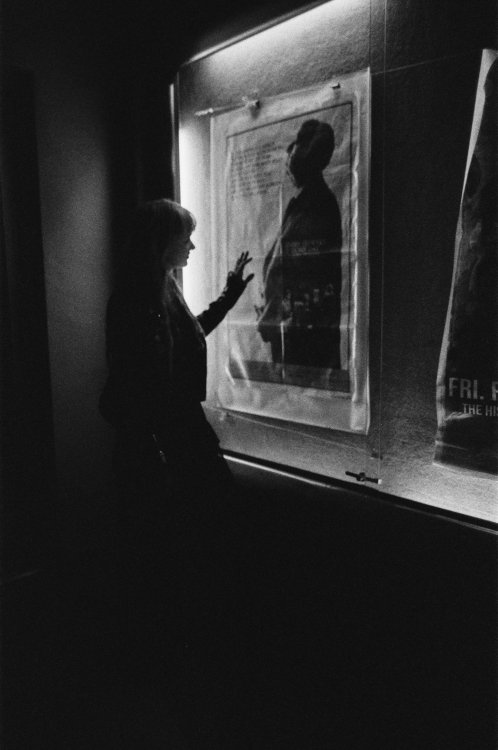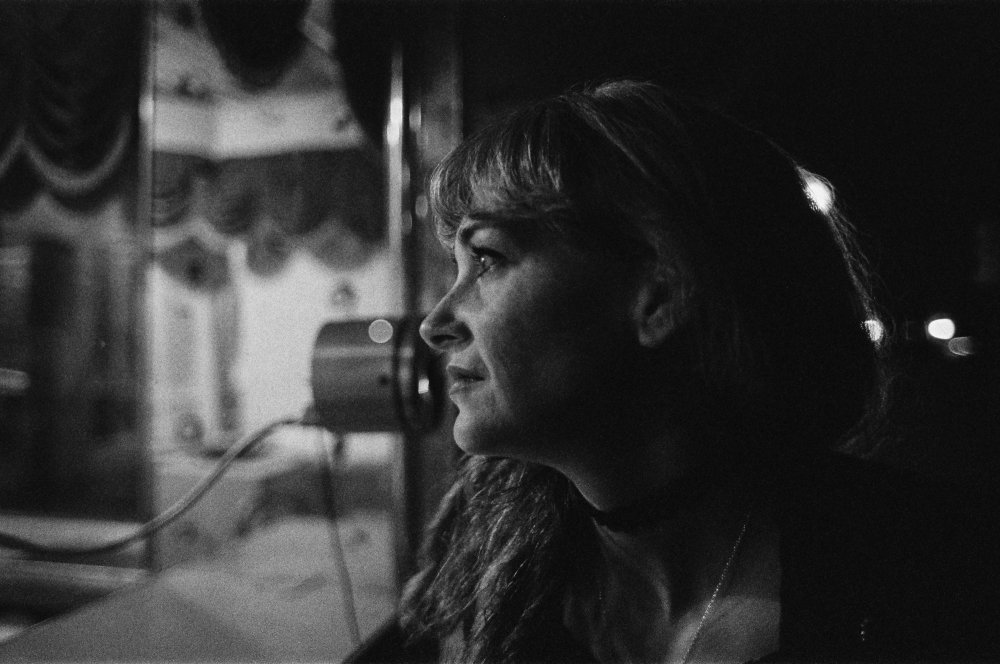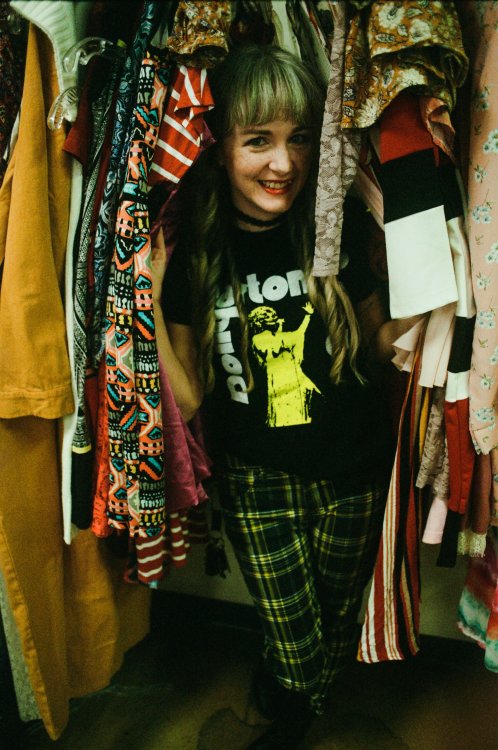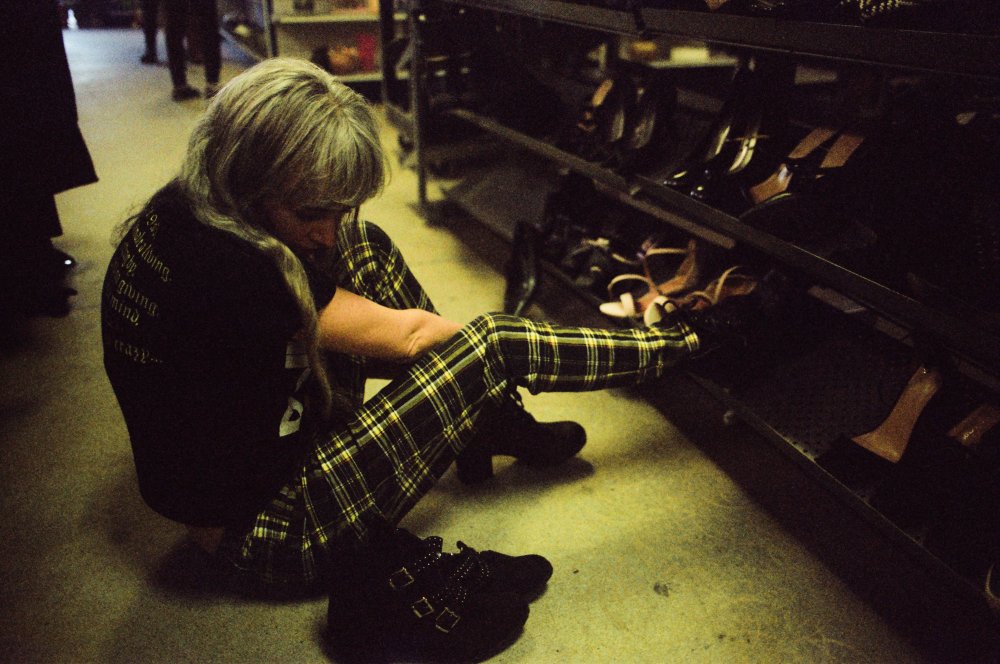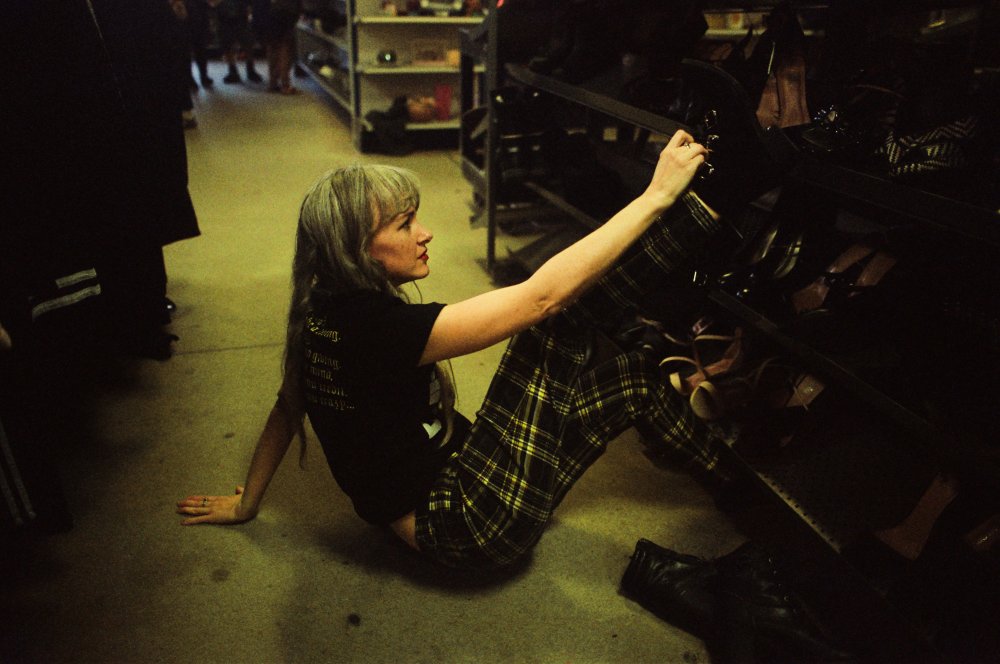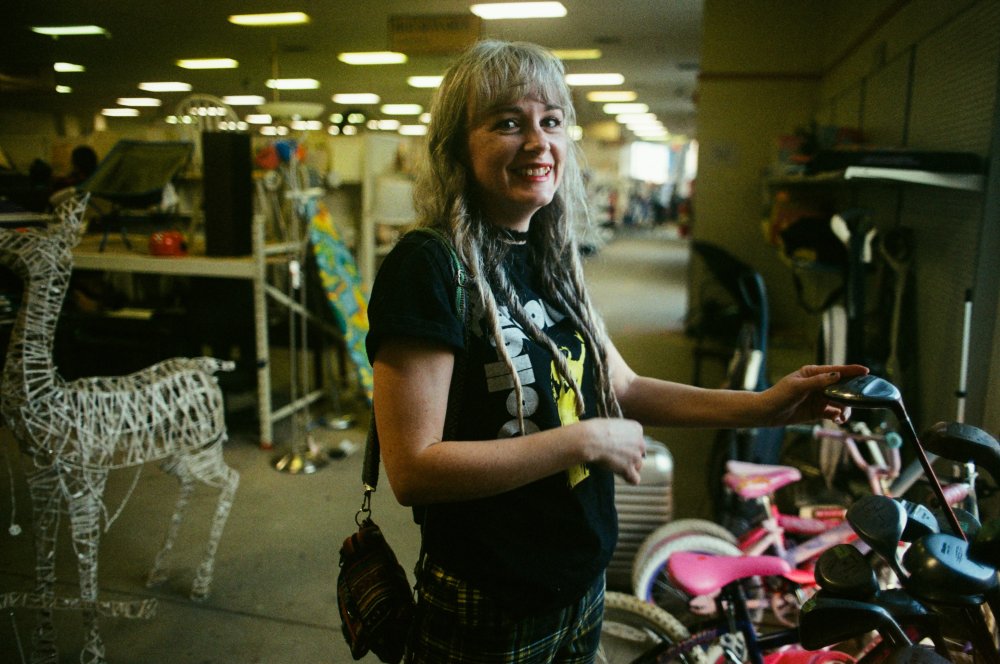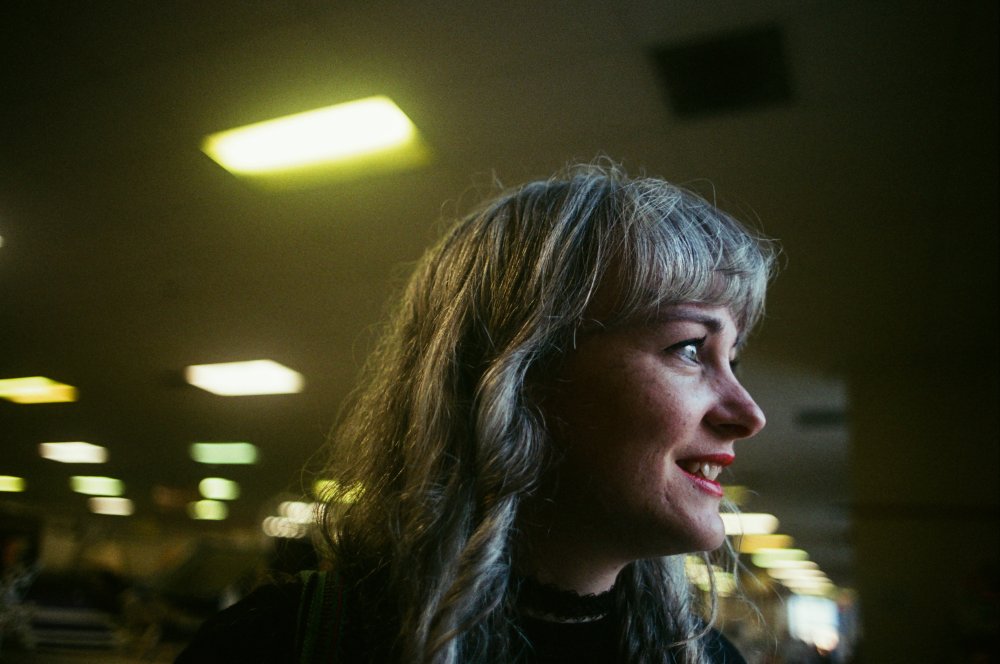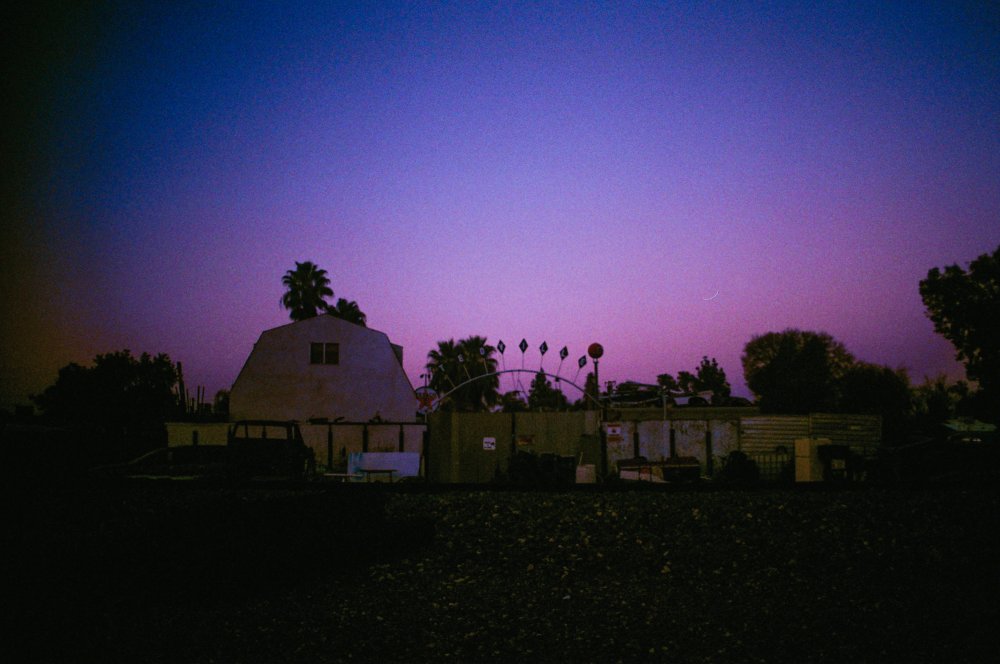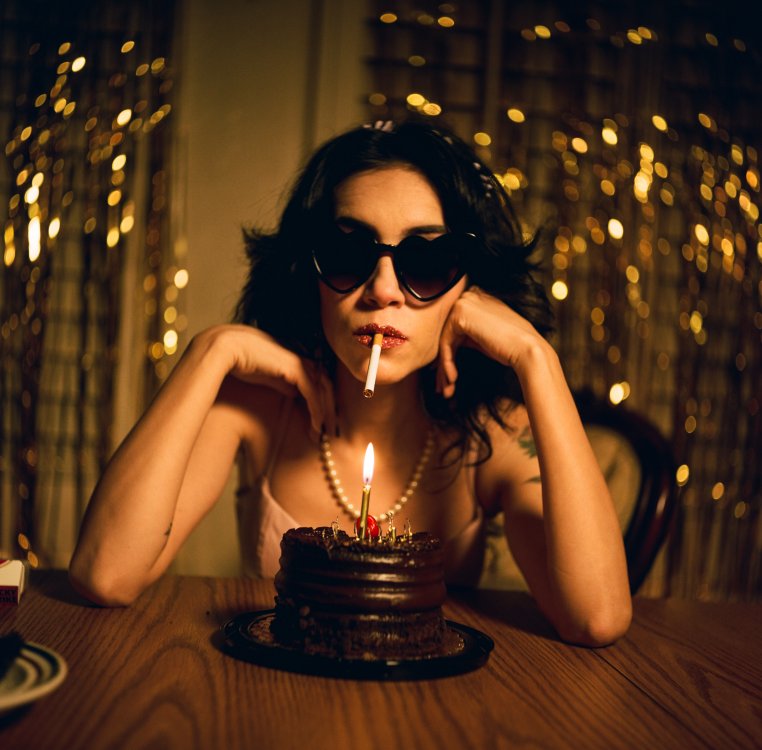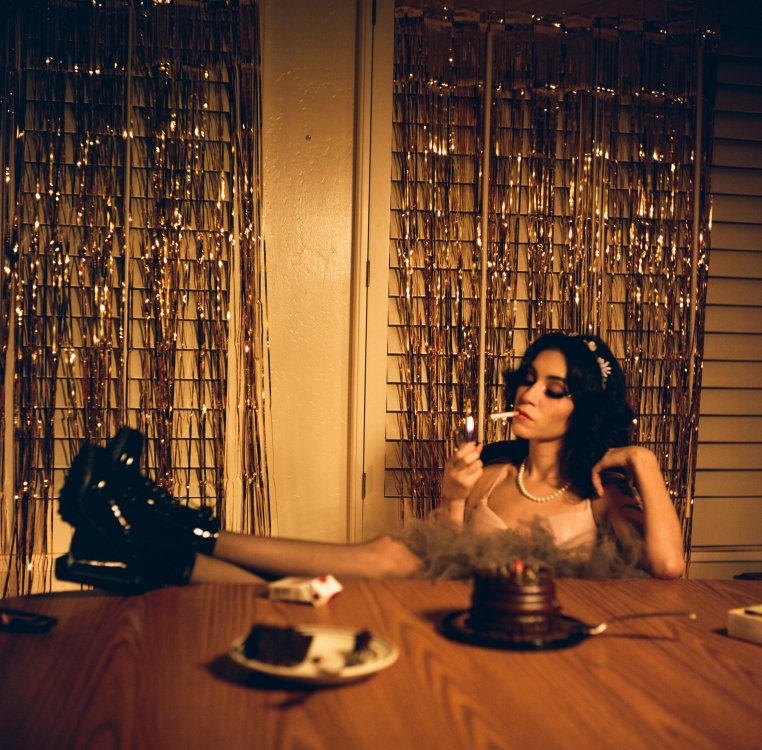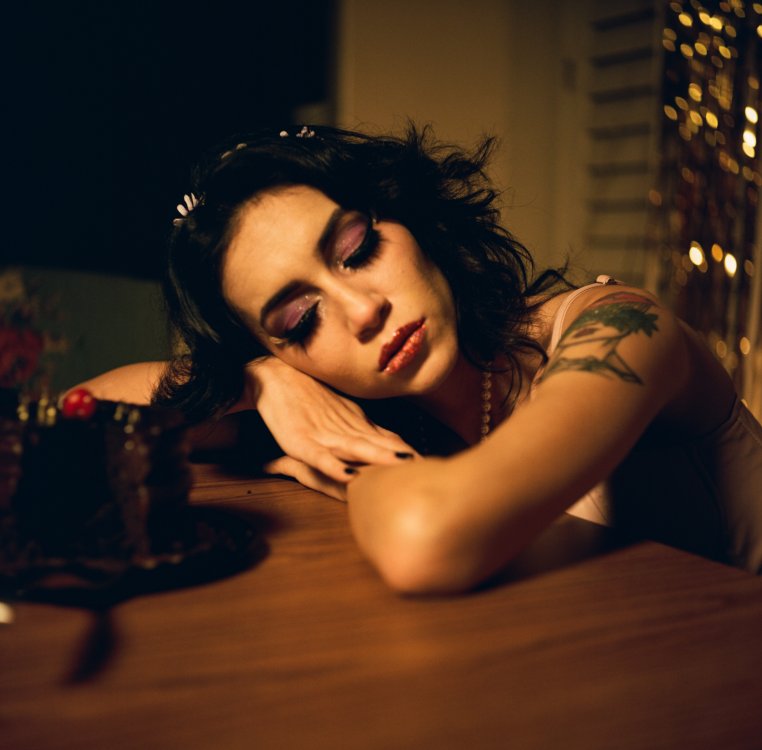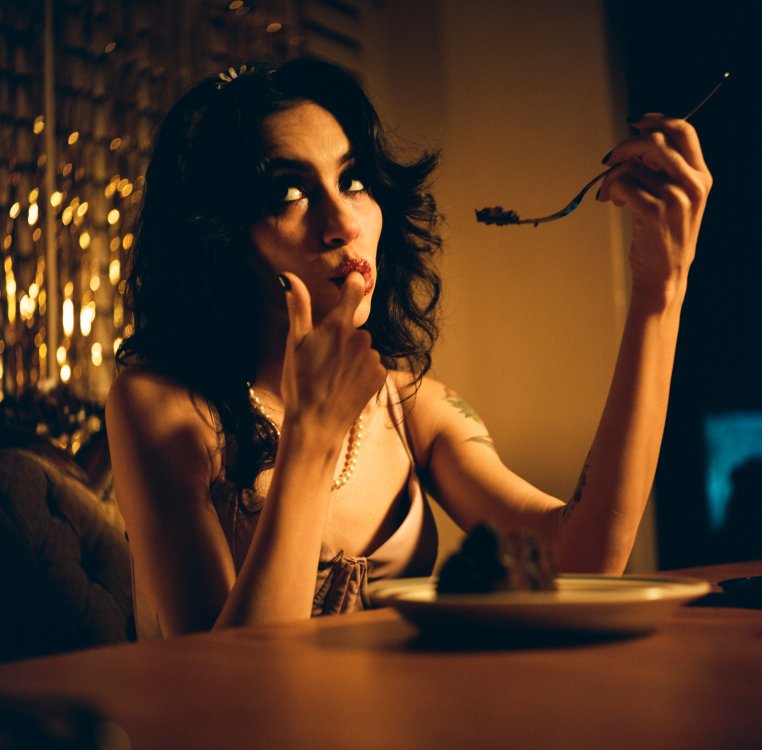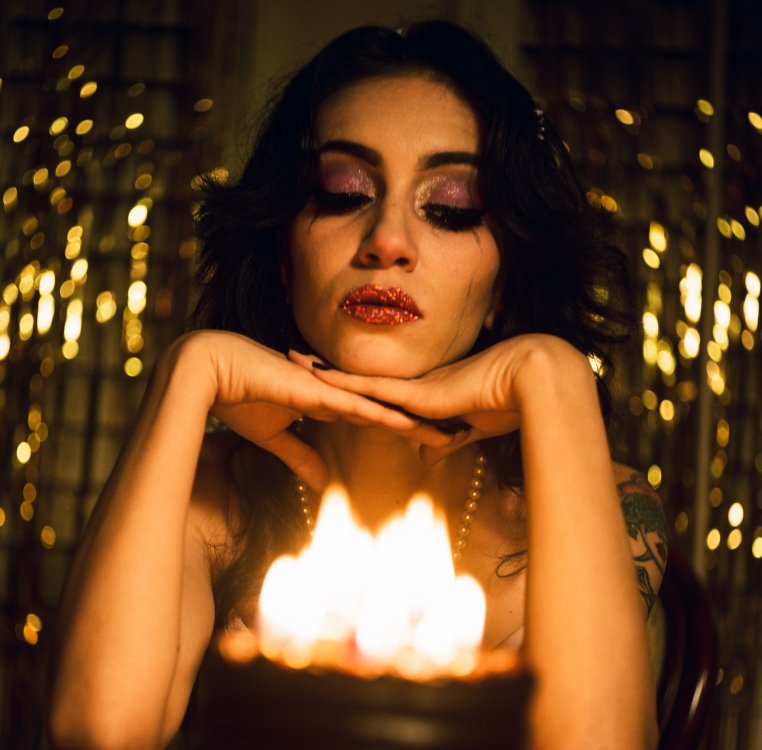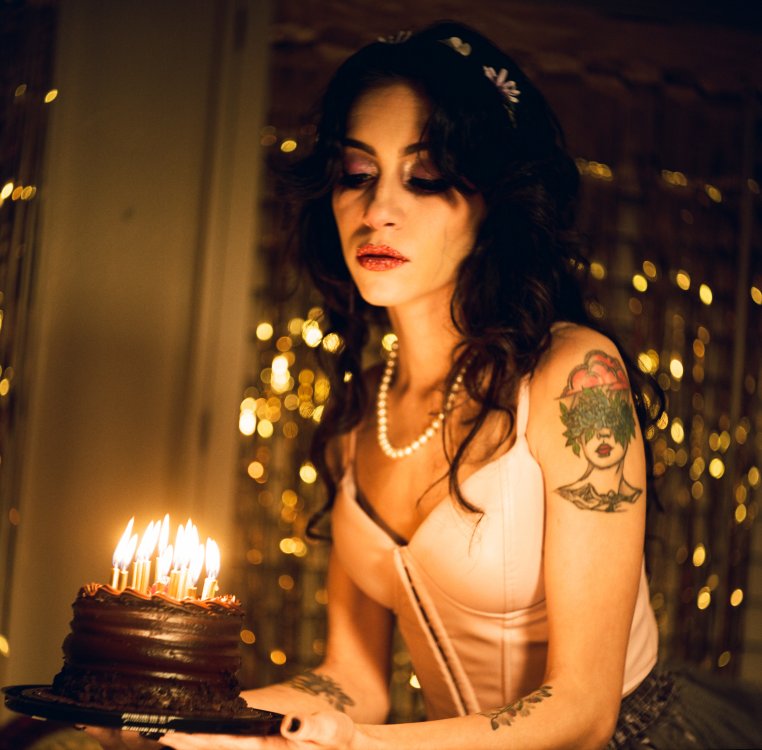-
Posts
394 -
Joined
-
Last visited
Content Type
Profiles
Forums
Articles
Everything posted by Matt Kieley
-
After David Lynch's passing, one of my local theaters screened Eraserhead and Mulholland Drive, so I finally got to see them on the big screen. Eraserhead is a top 3 favorite and Mulholland Drive might even be in the top ten. Lynch is my all time favorite director/artist. The biggest advantage to seeing these theatrically finally, is the sound. His sound design is unlike any other.
-
Been a while since I've been here. I recently got a GreatJoy 1.35x anamorphic adapter and I love it in spite of it's hefty weight. Here are some recent test videos:
-

Panasonic Lumix G7 vs. S5II, used as camcorders
Matt Kieley replied to John Matthews's topic in Cameras
Kern Pizar 26mm 1.9, Cosmicar 12.5mm 1.9 (some shots are punched in to crop out the vignetting). -

Panasonic Lumix G7 vs. S5II, used as camcorders
Matt Kieley replied to John Matthews's topic in Cameras
I actually came back here after I don't know how long to figure out what camera to get. I've loved my Panasonic S5, until the LCD broke. The frame is now off-center and stuck in selfie mode. Very weird, especially since I babied this camera. And it's past the 6 month warranty from mbp. I bought a nice new external monitor, bit I hate rigging it up. I was thinking of selling it and putting the (probably) meager amount I'd get for it on ebay, now that it's faulty, to another S5, but now I'm afraid any copy I get can break down on me like that. So I'm trying to figure out what to get instead. Recently I finally upgraded to Resolve studio and I've been remastering old projects in 4K. I'm surprised how good I can make old footage look. I have shorts shot on the GH1, Nikon D5100, and the Sony a6300, which I can make look really good in spite of the "old, bad" Sony color science. Even the short on the D5100 looks great. I've already thought for a while that we've had great image quality for a long time now, and the advancements in software have extended the life of these old cameras. All I really want is something compact, with good 1080p that doesn't have horrible artifacts or chroma noise, uncompressed internal audio with good preamps, enough dynamic range that highlights don't blow out so easily (I can live with dark blacks and even kinda prefer it) and long battery life and is easy to use without rigging it up. Oh, and doesn't overheat. I've been trying for a while to pare down my gear and see how far I can go with minimal equipment, which can be burdensome. I totally get why my favorite director, the late David Lynch (RIP) loved shooting with the Sony PD150. He knew it looked like shit but he loved the creative possibilities it gave him. He could shoot stripped down without a crew and cumbersome equipment to slow him down. He called the PD150 his "ugly, beautiful little thing". It's why I loved shooting with camcorder and the GH1 int he first place. I want to try and de-program myself from the cult of pixel-peeping and dynamic range charts and just embrace the "ugly". Any recommendations? I liked the G7 a lot when i had it. Here are some old short (and sample footage) remastered: "Ballad of Crazy Pete" was shot with a hacked GH1 (100mbps hack although it never yielded bitrates that high, some shots in that short are as low as 10mbps) "Crappy Halloween" was shot with the Nikon D5100 (or was it the 5200?). I don't think I used nay flat or special picture profile. I'm still remastering Chicken but here's a grading test I did with resolve. Shot on the a6300. 8bit Slog 2 with the "old, bad" Sony color science. All of these have film grain applied. Without it the remastered images were pretty clean after light NR (not all shots needed it). Just for fun here's an old G7 test video from like 2017. Shot in 4K, but I don't have the raw footage anymore so this is just the original 1080p export scaled to 4K in Adobe Media Encoder. Another thing to note, I recently did a paid video gig with an old Canon HF100 consumer camcorder. I bought it for like $60 just for fun "vibes" and the client, who is a young woman in her early 20s, got really excited when I said I could shoot with an old camcorder, and requested I shoot with it. So times you don't need the latest and greatest. -

Smallest MFT camera with usable AF-S, decent DR, and dual-ISO?
Matt Kieley replied to kye's topic in Cameras
As for AF though, have you considered getting a lidar follow focus like the PDMovie Live Air 3? -

Smallest MFT camera with usable AF-S, decent DR, and dual-ISO?
Matt Kieley replied to kye's topic in Cameras
Does it have to be MFT? I just got the Panasonic S5 now that it's cheap enough (I got one used for $800 on Adorama). It has great color (10 bit 4:2:2) and DR, dual iso, excellent ibis, and smaller/lighter than the GH5. -

Smallest MFT camera with usable AF-S, decent DR, and dual-ISO?
Matt Kieley replied to kye's topic in Cameras
What about the GH5s for dual iso low light? -
I was recently considering getting an HPX170 for a project, although I couldn't really justify spending the money. But there are some good videos on youtube demonstrating what handling the footage with modern upscaling and color grading software can do for cameras like it. It seems the majority people still actively using these cameras are Skate videographers.
-
Been a while since I've made something that wasn't a paid gig. I made a music video for my friends' band with the TTArtisan 25mm 1.33x Anamorphic lens and the Sony ZV-E10. My first real video shot with either (the camera was delivered literally 15 minutes before I left to shoot the video). Also the first real video I've edited with Resolve (I finally quit Adobe). A lot of firsts here haha.
-
I think he's referring to the s16 sensor 4K camera being developed by Octopus Camera and CinePi. There isn't much info they've put out besides some test footage, specs, and a rendering of the camera body.
-

Will The Creator change how blockbusters get filmed?
Matt Kieley replied to ntblowz's topic in Cameras
This is not even new for Sony. A handful of years ago there was a horror movie, The Possession of Hannah Grace, that was shot on the A7S II. It was released by Screen Gems (Sony) and there was also a lot of marketing around the fact that they used that camera. You could also see in the BTS material the camera was HEAVILY rigged out, which I thought was funny. -

The great 8K debate. Why I have changed my mind
Matt Kieley replied to Andrew Reid's topic in Cameras
I would probably only use high resolutions (4K and up) for projects with a heavy amount of VFX which is where I would find the ability to scale and reframe useful. Or if I specifically want that super crispy look. In term of visual quality FHD and 2K are more than adequate for narrative films. Most movie theaters are only projecting 2K DCP. 35mm film prints were only about as sharp as 720p. I even kinda prefer a softer look, and I suspect a lot of others do considering how many people use high res raw shooting cinema cameras, and put vintage lenses and diffusion filters on them. Many of my favorite films are shot on 16mm, and I've always loved that soft, grainy look. I'm a big fan of/greatly respect David Fincher, who uses the highest resolution cameras he can for more flexibility. I personally don't like shooting this way. I prefer to have less flexibility in post. I get optional paralysis and would be too tempted to keep tinkering and tweaking endlessly when the options are limitless. It's easer to force my choices in production because the options and time are limited enough to allow me to make some snap decisions, or to force other decisions. I'd rather get the look I want in-camera. I'm more interested in seeing how upscaling software will advance. The martial arts action film The Raid, which was shot on the Panasonic AF100 (remember that camera??) is being upscaled/remastered in 4K and the frame grab samples released by the director look good. -
Just got the TTArtisan 25mm T2 Anamorphot 1.33x. This is just a quick little test with the Sony FS5 and a Tiffen +2 diopter, shooting wide open. So far I love this tiny little anamorphic cine lens. No more janky DIY scope rigs, no more clamps, no more (occasionally) slightly misaligned footage. More than worth the $350 I paid for it. I hope they release a 50mm to pair with it. Look how compact and tiny it is:
-

Sony PMW-F3 with 2500 hours on it. Should I buy it?
Matt Kieley replied to basil_555's topic in Cameras
Can this thread become dedicated to any older Sony camera? After 12 years of shooting with mirrorless cameras, DSLRs, and Blackmagic Pocket/Micro cams, I finally got a proper "camcorder" or "cinema camera" or whatever you want to call it. I got a camera I had my eye on for the past four years that finally popped up on mbp for $999 so I had to have it. The Sony FS5! I also preordered the Sirui Nightwalker cine lenses on Indiegogo so I can have some proper no-fuss lenses to go with my no-fuss camera. I haven't had a proper camera for video that didn't require a bunch if fiddly rigging since I moved on from the DVX100 (to the GH1) in 2011. The built-in variable ND is amazing. I got it yesterday so today I decided to test the DR and test with Slog3 in 10bit 4:2:2 2K (and grading with FilmConvert Nitrate). Since last year I've been doing this by sitting in front of a big window at magic hour. This is also partially an experiment to find a good set-up that raises the interior light while sill being somewhat moody. The goal wasn't a bright commercial or interview look but a naturalistic dark-but-not-in-silhouette look without the window going nuclear. The natural light was supplemented by an Aputure LS-60D at full blast shooting through the diffusion disc of a 45" 5-in-1 reflector just out of frame camera-left. The compression of the grab kinda butchers it and crushes the shadows, but at least you get the idea. Here's the shot before I entered frame, so you can get a better look at the window/space: I think the light just barely allowed me to achieve what I wanted. The room is super cramped so it was challenging, but I'm pleased with this. I think I still have some practice/testing to fully get the hang of exposing for and grading Slog3. Side note: I didn't think I would share any footage so I wish I had dressed a little better before getting on camera. -
I have a Fujinon 18-108mm 1.8 c-mount zoom that covers s16 that's very light and compact. Here it is next to my Canon 17-102 and Panasonic 12-35, and mounted on my GH5: I don't know if it's compact enough for you, but it's the smallest c-mount zoom that covers s16 that I've owned (and I've owned quite a few).
-
The JVC LS-300 has a classic camcorder body with an MFT mount and S35 sensor although I think it's only 8bit internal. I was looking at camcorders recently and also came across a JVC camera with a small chip and built-in zoom lens that can record 10bit prores internally, but I can't remember which model it was. The sample footage I saw had some pretty ghastly CA. The beloved Sony F3 has the old school camcorder style body. It's kind of a shame that the camcorder form factor went out of fashion for cinema cameras. I still think the DVX100 is the most pleasurable camera I've ever used. It had the perfect size, weight, and shape.
-

Is the EOS-M *THE* Digital Super-8 Camera?
Matt Kieley replied to Matt James Smith ?'s topic in Cameras
Yes the front thread rotates when you focus. I tried a 46mm step ring but it's too small. -
Since I haven't made any videos in a while, all I'm using is my Canon Rebel 35mm camera and my Yashica Rookie TLR for 120. And occasionally my 6D for digital stills.
-
So I've been using a bmpcc 4k for nearly 4 months now, and while I love the image from it, the braw codec, and the UI, it definitely has some limitations as a camera with a 5 year old sensor and lacks things I've missed from the GH5 and G9 like IBIS and the ergonomics (I'm not a fan of the P4K body/ergonomics). With the new S5 cameras being released, the used prices of the original have already gone down to tempting prices, so I've been thinking about getting the original S5 and using it with the BM Video Assist 12G. I figured that could be sort of the best of both worlds between mirrorless and cameras the p4k: ibis, braw, prores, bm touch screen UI, less processed/sharpened looking image, an XLR audio interface, options to use SSDs or SD cards, high quality monitor, false color. I was actually thinking maybe the Video Assist would be a worthy investment because I can always use it with different cameras if I decide to switch to something else later. It's almost like a cine cam brain but without being limited to one sensor or lens mount, you can basically use any camera (though not all offer raw, you could still record prores). It turns the S5 into a FF 6K braw cine camera/audio interface it ibis for around $2K. The only tradeoff is rigging and powering a separate device. I was hoping to hear of the user experience from anyone who has used this setup, or if there are caveats I'n not aware of, etc.
-

Blackmagic Micro Cinema Super Guide and Why It Still Matters
Matt Kieley replied to crevice's topic in Cameras
It depends on your project/needs, and if you already own any of the cameras mentioned. As someone who has owned the original Pocket, Micro, and currently the P4K, I would take the P4K with the 2.6K Super 16 crop over the original Pocket and Micro. You get color, dynamic range and image quality every bit as good as the older cameras (people like to wax poetic about the old sensors but any of these cameras can be treated in post to match seamlessly), plus you're gaining a dual native iso/better lowlight performance, better rolling shutter performance, more compression options (up to 12:1), better UI (the touch screen and physical buttons for ISO, WB, etc is a godsend compared to the fiddly little buttons and menu of the Micro), more media options (I can shoot up to 8:1 on a Sandisk extreme Pro sd card, plus there's cfast and SSD), frame rates up to 120fps, no moire/no need for the rawlite filter, and the braw codec is very edit friendly. The only thing you'd lose is ProRes. You can only shoot Braw with the s16mm crop. All that said, if you already have the Micro and it's your only camera, shoot with what you have. It still produces a great image and is a perfectly usable camera, even if it is a bit fiddly. I'm actually planning on using it as a first person POV camera on a helmet for a project I'm working on. -
-
-
Another recent shoot on Kodak Potra 400 in 120 format: Focusing on the ground glass of my Yaschica Rookie can be difficult so I missed focus a few times. Oh well...




